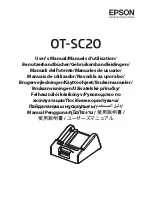
7.6
When disconnecting charger, always do so in reverse sequence of connecting procedure and break first connection
while as far away from battery as practical.
7.7
A marine (boat) battery must be removed and charged on shore. To charge it on board requires equipment
specially designed for marine use.
8. GROUNDING AND AC POWER CORD CONNECTIONS
8.1
This battery charger is for use on a nominal 120 volt circuit and has a grounded plug. The charger must be
grounded, to reduce the risk of electric shock. The plug must be plugged into an outlet that is properly installed and
grounded in accordance with all local codes and ordinances. The plug pins must fit the receptacle (outlet). Do not use
with an ungrounded system.
8.2 DANGER:
Never alter the AC cord or plug provided
– if it does not fit the outlet, have a proper grounded outlet
installed by a qualified electrician. An improper connection can result in a risk of an electric shock or electrocution.
NOTE:
Pursuant to Canadian Regulations, use of an adapter plug is not allowed in Canada. Use of an adapter
plug in the United States is not recommended and should not be used.
8.3 USING AN EXTENSION CORD
The use of an extension cord is not recommended. If you must use an extension cord, follow these guidelines:
• Pins on plug of extension cord must be the same number, size, and shape as those of plug on charger.
• Ensure that the extension cord is properly wired and in good electrical condition.
• Wire size must be large enough for the AC ampere rating of charger, as specified:
Recommended minimum AWG size for an extension cord
9. ASSEMBLY INSTRUCTIONS
9.1
Remove all cord wraps and uncoil the cables prior to using the battery charger.
9.2
Extend the handle from the retracted position by pulling it upward until it locks into place. (Press the small silver
buttons inward, if necessary.)
1-800-345-4545 jegs.com
Summary of Contents for 81994
Page 7: ...1 800 345 4545 jegs com ...


























